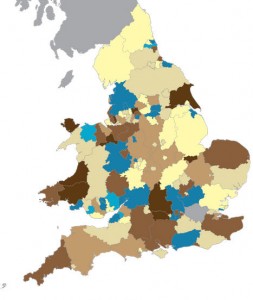The Labour blog Left Foot Forward provides a useful breakdown of UK welfare spend that demonstrates where most of the money is going, and how that might be shaping government policy.
Despite the spin on unemployment and immigration, for example:
“Almost half our welfare expenditure, all £78.4 billion of it, is spent on our ageing population. And the number of people drawing a state pension is ever-growing”
Next, “A breakdown of [the 22.08 per cent of welfare expenditure that goes to workers on low incomes] shows an enormous focus on housing, which explains the increased attention on housing benefit:”

Simple, but useful. Sadly, there’s no link to the raw data. Interestingly, in looking for that I found this website on UK public spending – created by left wing blogger Christopher Cantrill. As both of these sources have a self-declared political orientation, it’s worth tracking the source of the data, declared here.
(By the way, regarding political bias: if a source has declared it, that doesn’t mean their information is not valid, only that you need to check the information. If a source has not declared a bias, you should always assume they have one, and still check the information.)
Can you add anything more?

